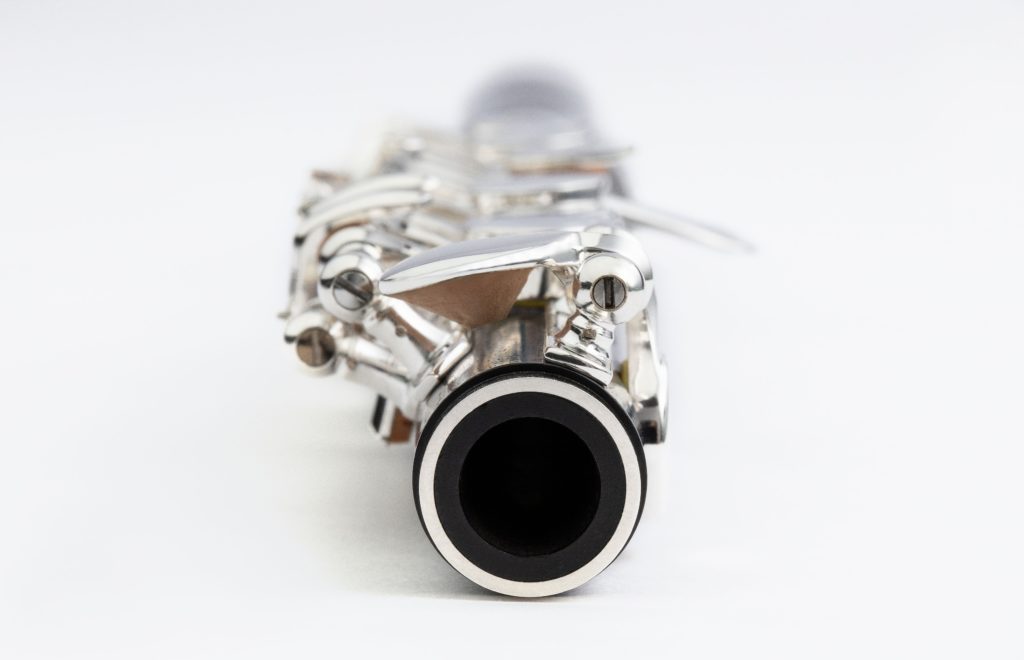Jim Walker, know as the “Renaissance Man of the Flute”, is well-known in the flute world for his dynamic playing and versatility. He was principal flute of the Los Angeles Philharmonic for seven seasons, and the first-call studio flutist in L.A. for the better part of two decades. He is the founder of Free Flight (jazz-classical fusion), which made multiple appearances on the Tonight Show and Today Show, as well as a number one record (Slice of Life).
Currently, Jim is Senior Lecturer and Coordinator of Flute Studies at the University of Southern California’s Thornton School of Music and Instructor of Flute and Chamber Music at the Colburn Conservatory of Music. Jim has taught hundreds of flutists at these renowned institutions. Many of them have gone on to successful orchestral careers, holding principal chairs in major symphonies from Phoenix to Boston to Beijing. Jim is not interested in simply training musicians; he inspires each pupil as a whole person, and students leave his tutelage feeling empowered, reaching for the stars.
Read on to find out why Jim Walker says you should play the piccolo!
The Role of the Piccolo in a Flutist’s Career
I wish I had a penny for every time a flute player complained about having to play the piccolo. This attitude exists at all levels of flute playing and is an attitude that needs correcting. Even though the ranks of the professional musician are somewhat small (compared to the large numbers in high school and college concert/marching band) it is helpful to recognize that most of today’s top professional flutists have spent many years playing piccolo.
For them playing piccolo offered a chance to be playing important parts in the orchestra or band when the solo flute position was covered by someone else. In Los Angeles and New York there is not one working flutist who does not bring his piccolo to every recording session on the chance that a very challenging piccolo part will show up on one of the musical selections for the day’s soundtrack.
This also goes for the woodwind doublers. They often have a job that calls for a jump from alto sax to piccolo to clarinet to flute in a three-minute piece of music. SUMMARY = If you have any dream that includes a career on the flute you don’t have any choice in the matter.
Some of the negative sentiments I have heard students express are (1). ” The piccolo messes up my flute playing ” (2). “It is so loud and painful”. (3). “The keys are so close together that it feels funny, really different from my flute”. (4). “The band owns one, but it is terrible.” Etc, etc, etc…. These ideas have some merit but none of them is a permanent roadblock to experiencing the joy of piccolo playing. Let’s examine some possible solutions to these problems.
Playing Piccolo Teaches Flexibility
The main cause of a messed up flute embouchure is that the often flutists already have problems with an incorrect fundamental approach to the making the sound on flute. (Mainly a lack of lip strength, flexibility and movement). Many players have the incorrect habit of fixing the lips in one locked position of comfort and holding on to it for dear life.
When they try the piccolo (which requires a smaller lip opening) they squeeze their lips too tightly, not developing the necessary lip movement, control or flexibility. When they return to the flute their new piccolo position doesn’t automatically work on the flute. Controlled lip movement, with strong abdominal support is essential to both piccolo and flute playing. This element of control is mastered only by practicing long tones (loud and SOFT) in all registers, including the tougher high notes. The same materials should be used for both the flute and piccolo.
The extreme loudness comes from not taking time or the right approach to controlling the sound. A tremendous amount of body and breath support is necessary to sustain beautiful pitches at softer, mellower dynamics. The tendency to simply blow harder to get the notes must be avoided.
To develop the correct control and embouchure there is no substitute for playing long tone and slurred interval studies that emphasize maintaining a pure tone through all dynamics (especially pianissimo). At least 10 minutes a day should be spent on developing control of the sound at soft levels. Such exercises are no more fun than doing our aerobics or calisthenics, but they do lead to the kind of control that eradicates the painful aspects of student piccolo playing. The use of a tuning meter is highly encouraged due to the tendencies of extreme flat playing in softer dynamics and sharp playing in loud passages.
The relative small key positions on the piccolo do seem uncomfortably close to the novice piccolo player. However you can think back to the early days of your flute study to remember how terribly awkward the flute seemed. The adjustment and “comfort zone” comes quite naturally with a nominal investment of time. If anyone looked at my hands and tried to imagine them fitting the piccolo they would think “No Way”. The fact is that our fingers can do many amazing things with the proper attitude and some serious practice.
Owning a Good Piccolo Will Help
Unfortunately, many public school band programs have not kept up normal maintenance of their instruments, and that includes piccolos. There is nothing more frustrating than to try to play an instrument that is not in proper working order. It is important to realize that the quality of craftsmanship and design of piccolos has improved dramatically in the last ten years. The new instruments play much easier, better in tune, and are more consistent in padding and adjustment areas.
Currently prices are quite reasonable, considering that the quality of many student piccolos is very close to professional models. The design is virtually the same and especially in the head joint area one finds first class craftsmanship. Please make sure your school owned piccolo is in good condition and if it needs to be replaced, check out the wide variety of new instruments.
Overcome Your Fear of the Piccolo!
Don’t be afraid of the piccolo! There is one waiting to open you up to lots of good musical challenges and fulfillment. As we have seen, flute players must have lip flexibility to play well! Piccolo playing teaches flutists this flexibility.
Perhaps the biggest reason one should play the piccolo is that IT IS FUN! You can be heard and it will lead to better flute playing (especially in the area of control and dynamics).
Are you looking to experience the benefits of playing piccolo first-hand? Contact our piccolo specialists today to find the perfect piccolo for you!


